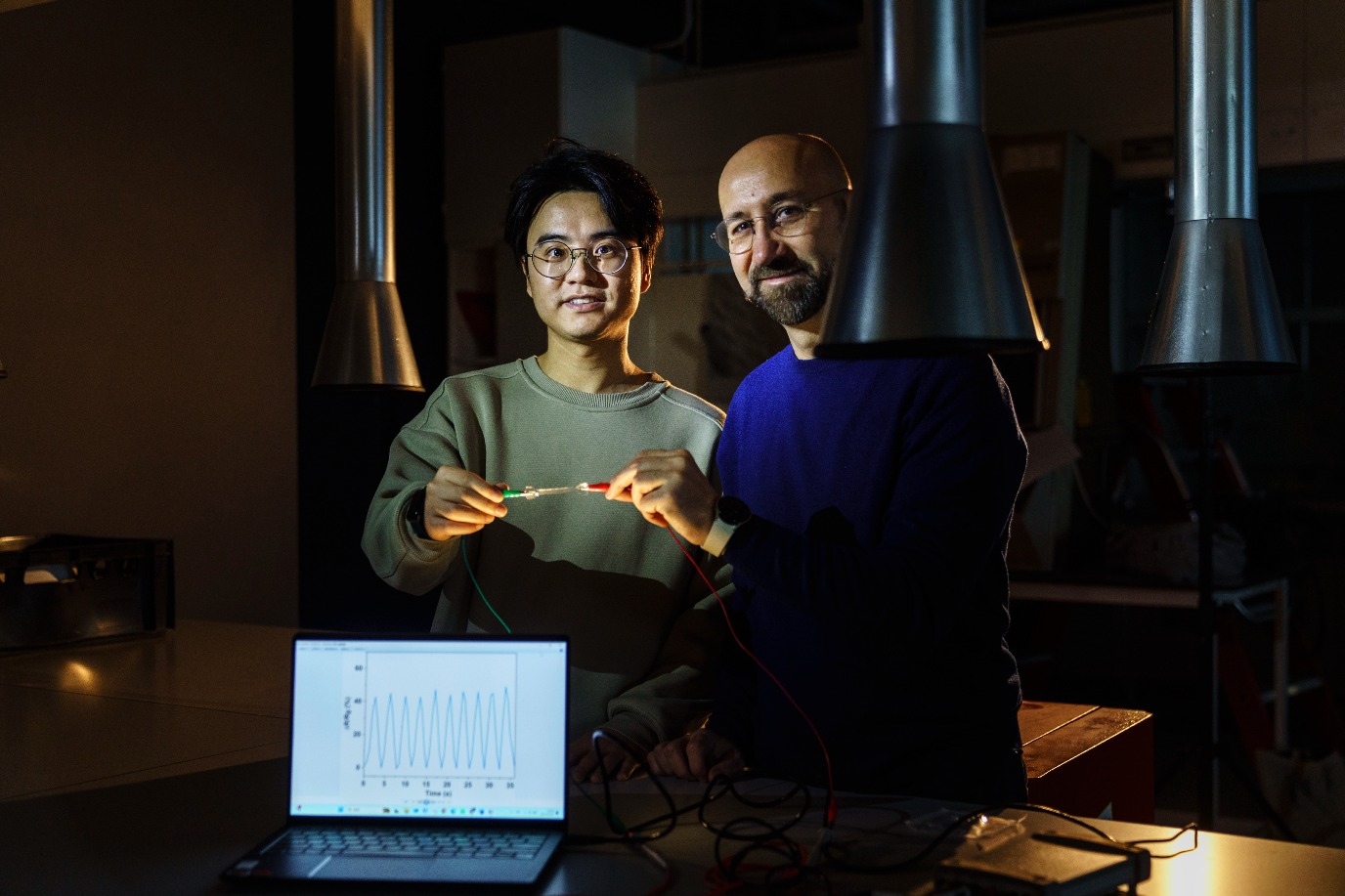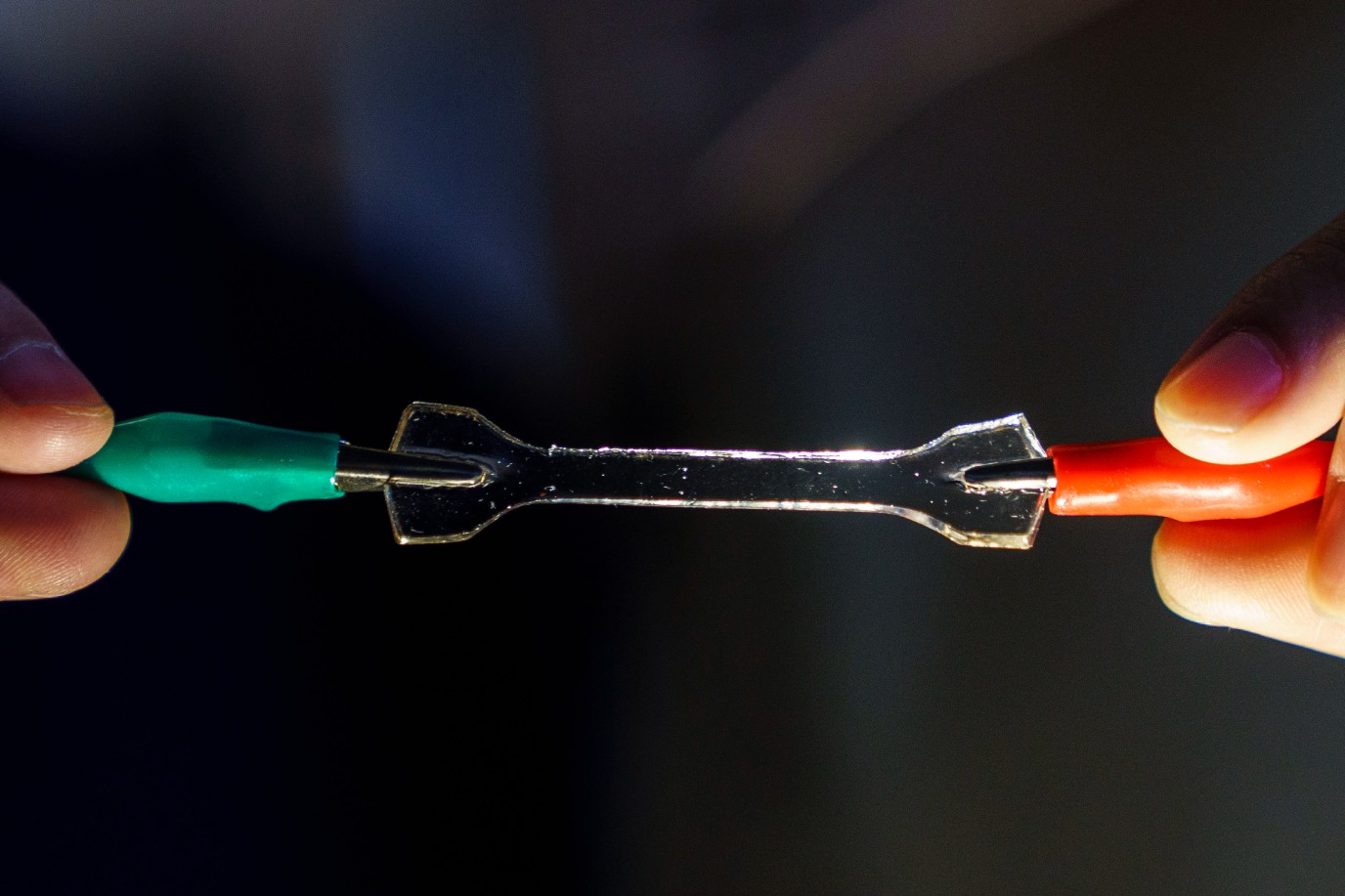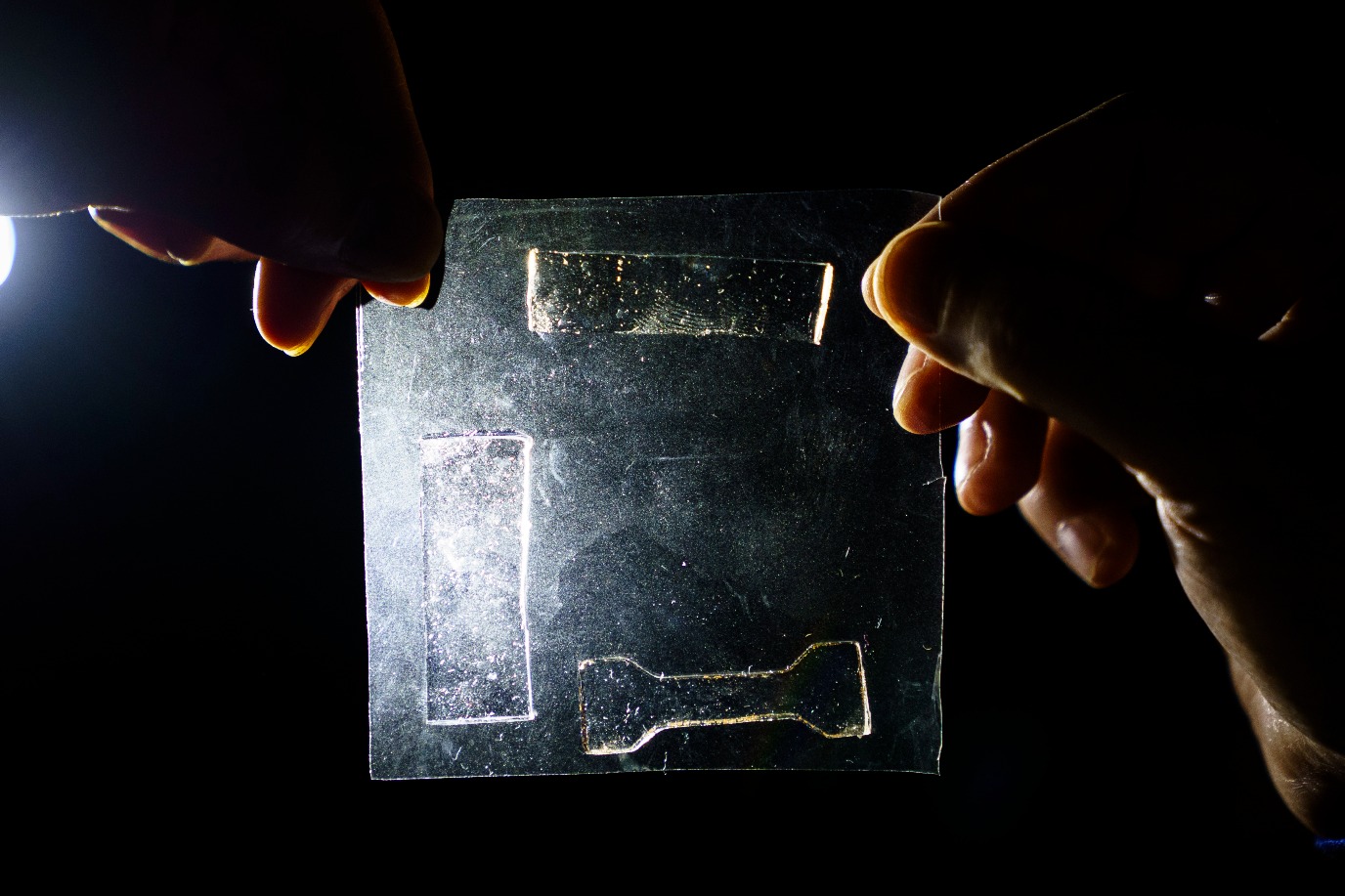A water-resistant, self-healing sensor
It’s stretchable, adhesive, self-healing in case it breaks, water and freezetolerant, and it conducts electricity. The transparent strip shown in the photos is a so-called hydrogel, developed by PhD student Zeyu Zhang, under supervision of Patrizio Raffa, associate professor of Smart and Sustainable Polymeric Products. Because the conductivity changes when the material is stretched, it can be used as a sensor: stick it to your elbow and you can measure how far it bends, or stick it to a building in a seismic zone and you can measure vibrations. Even in the rain.



Hydrogels are nothing new: ‘The most common example of a hydrogel is gelatine, the stuff that you use when you make pudding,’ Raffa explains. ‘But this hydrogel is much stronger.’ And the gel can heal itself when it breaks. In his office, Raffa shows a thin strip of the transparent material. ‘Look, there’s a small crack here, you see? In a few hours, this will have healed.’
The self-healing ability was a nice surprise, though Raffa had already expected it, based on the composition of the material. This hydrogel contains so-called amphiphilic polymers: long molecules with parts that like water, and parts that dislike water. ‘When a crack appears, the hydrophobic parts find each other again and form new bonds.’ But Raffa is mainly proud of the water-resistant properties: ‘Hydrogels tend to swell up considerably under water, but ours does not.’ That means that Raffa and Zhang’s hydrogel will continue to function even under water or in the rain.
Zhang continues to work on the material and one of his goals is to find biodegradable alternatives for some of the ingredients. The next step is to work on applications, which Raffa would like to do in collaboration with the industry. ‘It would be great if someone sees this and thinks: that’s just what I needed! Then they can contact me.’
Text: FSE Science Newsroom | Charlotte Vlek
Photos: Reyer Boxem
Every two weeks, UG Makers puts the spotlight on a researcher who has created something tangible, ranging from homemade measuring equipment for academic research to small or larger products that can change our daily lives. That is how UG researchers contribute to the solutions for big scientific and societal challenges.
For decades, engineering teaching and research at the UG has been part of a wide array of strong disciplines, and from a national point of view, our collaboration with the four technical universities is becoming more and more intensive.
Previous portraits of Makers can be found on the overview page
More information
More news
-
06 January 2026
Getting to grips with the workhorses of our body
